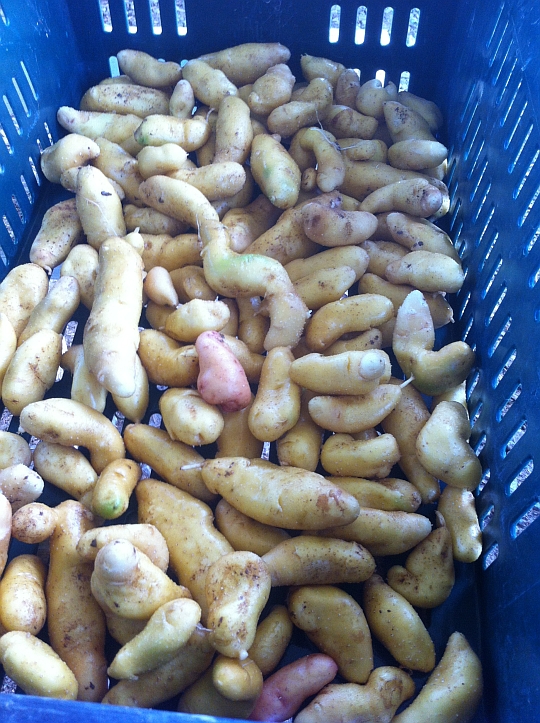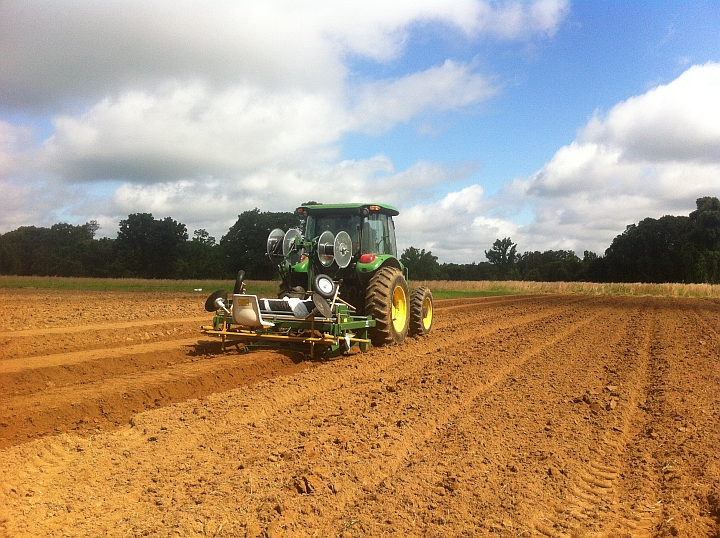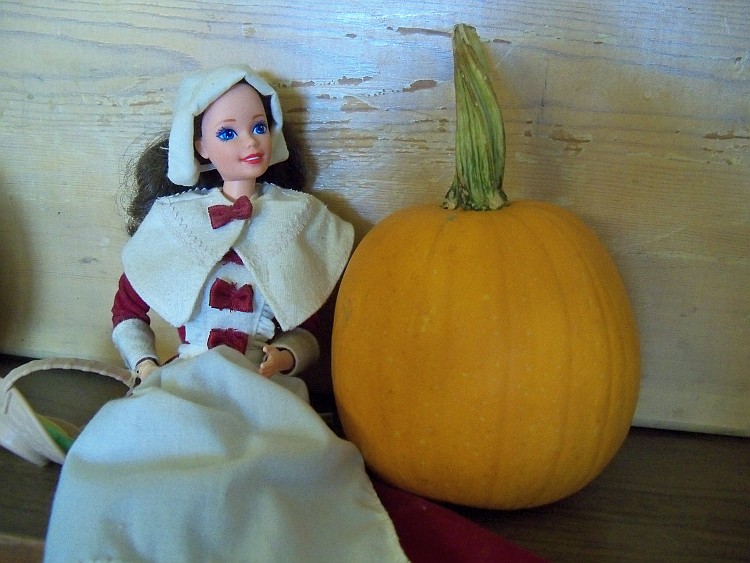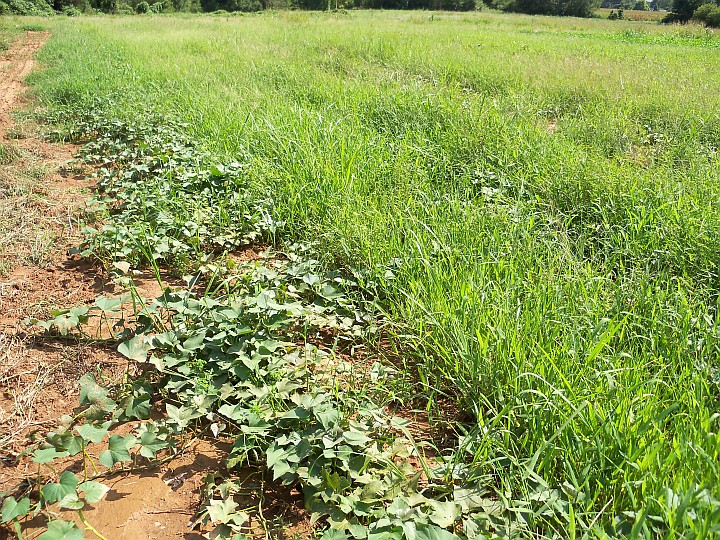The summer solstice is fast approaching. Siesta season at Tubby Creek Farm! We are out the door at first light every morning, and as the days get hotter we like to take advantage of the evening hours when the sun is low. Besides, we have to stay up until the chickens go to bed at dusk every evening so we can close up their house and keep them safe from predators. There just aren’t enough hours between dark and dawn to get a good night’s sleep. So we add a post-lunch nap to the schedule and sleep through the hottest part of the day.
The field has dried out and Nathan has been doing some tractor work for us. It is finally dry enough to do some hoeing and again we are racing the rain to get the sweet potatoes and okra cleaned up. Both are very important crops for us, the okra gives up reliable harvests in August and September when less heat tolerant vegetables are flagging, and sweet potatoes have a leading role in the fall CSA. We can’t afford to lose them to the weeds!
This week it is out with the squash and in with the cucumbers. The yellow squash cranked out some really remarkable yields for about 10 days and now, poof, it’s gone. The plants are turning a little yellowy and aborting their immature female flowers. Blossom drop is a response to stress. The damp weather has not been kind to the squash. I am hoping they will put on another flush of fruit but I know better than to hold my breath. We are still harvesting some squash and zucchini, but nothing like the incredible yields of the past two weeks.
Squashes, zucchini, cucumbers and moreThe cucumbers have stepped up to fill the void. I think that cucumbers, with their sweet, refreshing crunch, are one of the iconic tastes of summer. This is a relief after the paltry cucumber crop we had last year. The plants are full of fruit and demand picking daily. From flower to harvestable fruit in 10 days, cucumbers can quickly become overgrown and seedy. Cucumbers, like summer squash and zucchini, are harvested while they are immature and still growing so they have a thin, edible skin and small, underdeveloped seeds. Watermelon, cantaloupe, and winter squashes are harvested at maturity and have thick skins and mature seeds. If you wanted to save seeds from a cucumber, you would have to leave it on the plant until it becomes fat and yellow and the stem dies.
Cucumbers can also be bitter due to a chemical called cucurbitacin present in the leaves and stems of the plant. Cucumbers are the Goldilocks of the garden, everything has to be just right. If it is too hot or too cold, to wet or too dry, the bitter chemical can be present in the fruit. Fortunately, if you have a bitter cucumber, the bitterness tends to be concentrated in the skin and at the stem end of the cucumber. To test a cucumber for bitterness, trim off the stem end and take a thin slice. If that is bitter free, the rest of the fruit will be as well. If there is some bitterness, you can trim more off of the stem end and/or peel the fruit.
You may find both smaller, pickling type cucumbers in your share as well as longer slicing types. If you plan to make pickles, the pickling types really are better. For fresh eating, both are equally delicious.
 Potatoes Explained
Potatoes Explained
What are new potatoes? New potatoes are any potato harvested while they are young and typically small. Compared to storage potatoes, new potatoes have very thin skins, high moisture and high sugar content. They are harvested while the plant is still green. Once a potato plant starts to die back, the skins on the potatoes start to thicken and sugar is converted to starch. This natural curing process prepares the tuber for waiting in the ground until conditions are favorable to sprout and grow into a new potato plant. Ah, the circle of life! Because new potatoes are not cured like mature potatoes, they should always be refrigerated and used promptly.
Fingerling potatoes are any variety of potato that produces lots of small, often knobby, and elongated tubers. FingerlinTgs typically have thin skins and can be either waxy or starchy. They can be dug as new potatoes or as mature potatoes.
Sometimes we are asked why we do not grow baking, or Russet, potatoes. This is not the ideal climate for growing potatoes because our short spring gives way quickly to hot summer. Russet potatoes require a longer time to grow, but tubers will stop growing once the soil temperature reaches 80 degrees. We just don’t have a long enough spring or a cool enough summer to grow Russet potatoes well. If you really want to bake a potato, looks like you are going to have to wait until the sweet potatoes, a crop much better suited to our climate, come in in September.
Summer is here!


